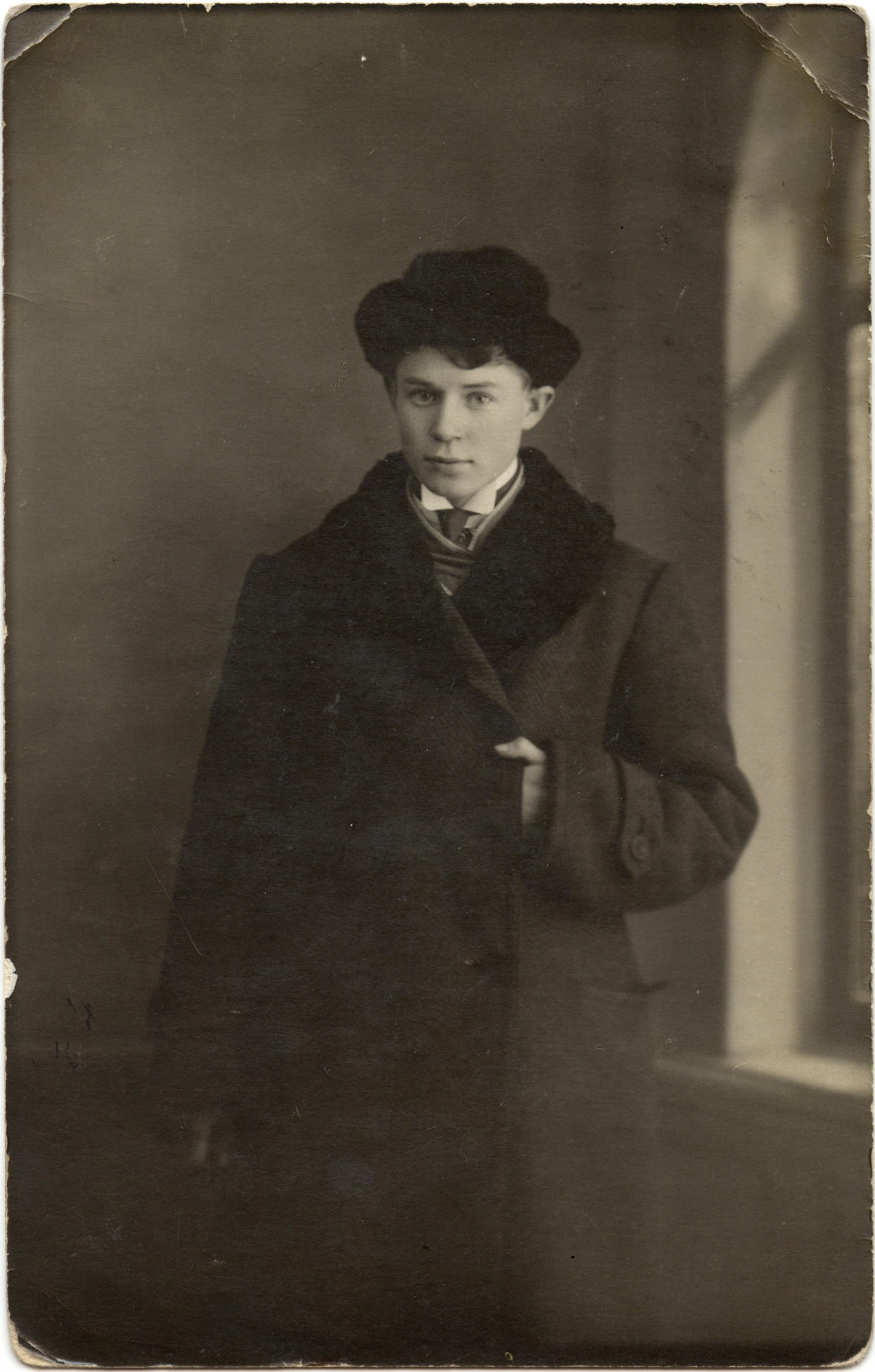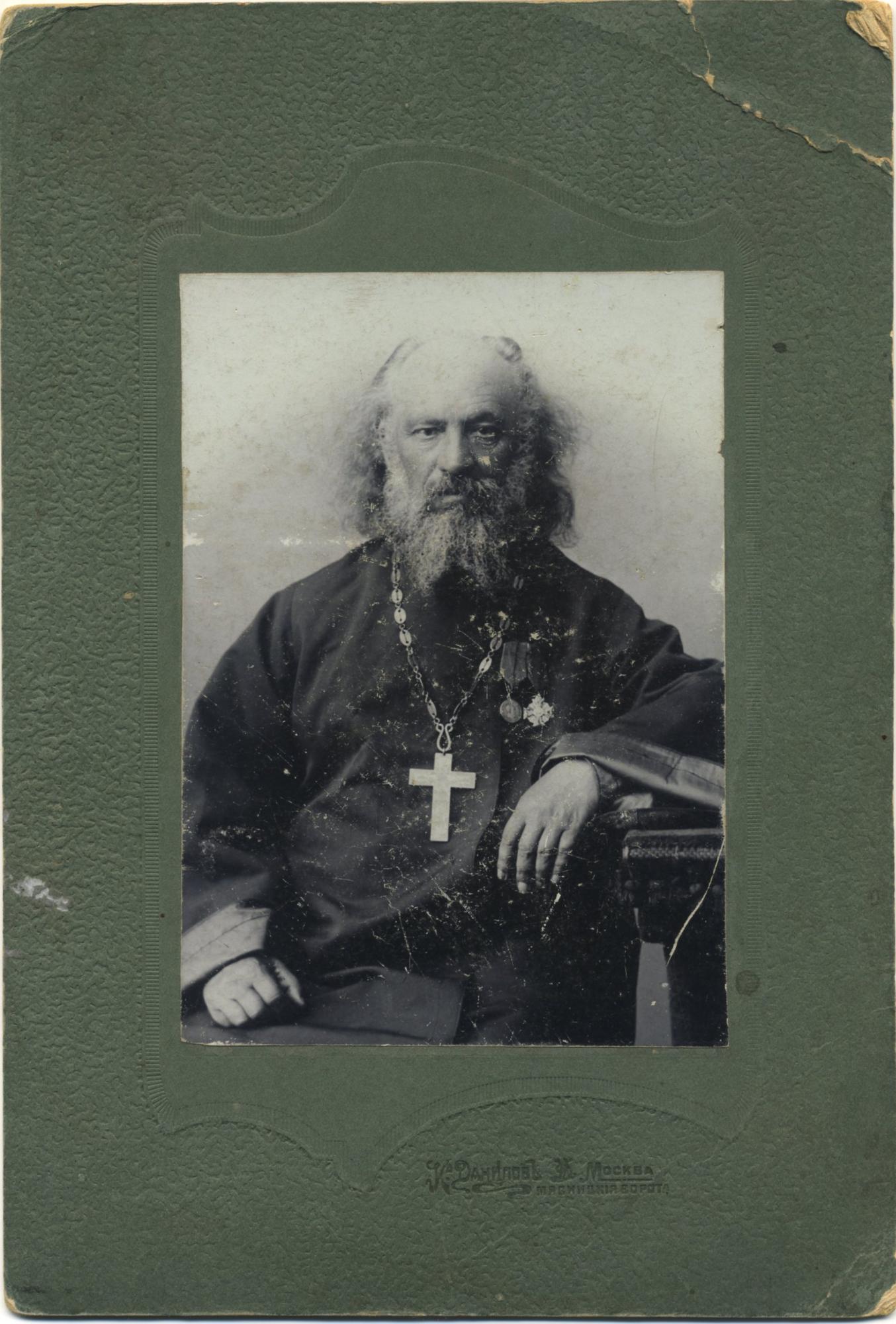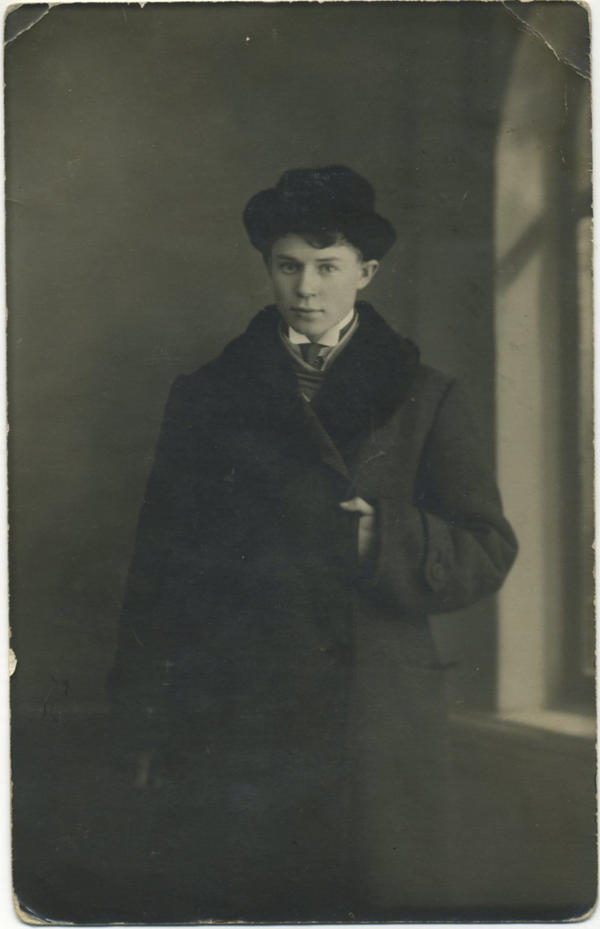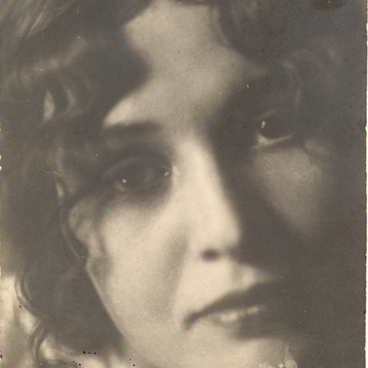The photograph was made in 1913. This was the first year of Sergei Yesenin in Moscow. In March, the poet got acquainted with Anna Izryadnova, who soon became his partner wife. in Moscow Yesenin managed to land a job in the ‘Kultura’ (Culture) book-selling partnership and then, when it was closed, in the printing house of the Partnership of I.D. Sytin, where Izryadnova served as a proof-reader. ‘On the outside he did not look like a village lad, — she recalled her first impression of Yesenin. — He was dressed in a brown suit, a high stiffly starched collar, and a green tie. With his golden locks he was dollishly handsome’.
In September, Yesenin, just out of the Spas-Klepiki school, applied for admission to the A.L. Shanyavsky city people’s university. The poet was enrolled as the first-year trainee of the history and philosophy cycle at the academic department. Izryadnova attended the lectures together with him and complained that Yesenin “gave all his free time to reading, spent his salary for buying books and magazines, and not at all worrying about the living”.
On the reverse side there is the letter of Sergei Yesenin to Ivan Smirnov, the Konstantinovo priest, who played a significant role in the young poet’s personality development. He joined in marriage the poet’s parents and christened Yesenin himself. Ekaterina Alexandrovna, sister of Yesenin, wrote about this man: “Short in height, with heavy features and intelligent black eyes, he could get along with people so well that there was not a single person able to tell something bad about Father Ivan”. In the Konstantinovo village the house of Father Ivan was located near the Kazansky church opposite the house of Yesenin. “Acacia brushes enclosed an old low-rise house with folding shutters. On the right there is the white and well-proportioned church looking like a bride, on the left, the deacon”s house and farther, the psalm reader”s one… Our priest, Father Ivan, lived in the old house with acacias”, — remembered Ekaterina Yesenina. Before leaving for Moscow in 1912 году Yesenin used to visit the priest’s house. The memory of this house was depicted by the poet in his well-known poem impressed by melancholic remembrances of the days of childhood and early youthhood:
Low house with blue shutters
Won’t be forgotten forever, —
The years that went into gloom
Were quite recent.
In the letter the poet writes: “I congratulate dear Good Father with the coming Saint”s day and wholeheartedly wish further and profound thriving in the fold of good deeds. S. Yesenin Village of Konstantinovo, Kuzminsky post office, Ryazan uyezd. Care of priest Father I. Smirnov”. The photograph was carefully kept in the family of Yesenin and was handed over to the Museum in 2008.
In September, Yesenin, just out of the Spas-Klepiki school, applied for admission to the A.L. Shanyavsky city people’s university. The poet was enrolled as the first-year trainee of the history and philosophy cycle at the academic department. Izryadnova attended the lectures together with him and complained that Yesenin “gave all his free time to reading, spent his salary for buying books and magazines, and not at all worrying about the living”.
On the reverse side there is the letter of Sergei Yesenin to Ivan Smirnov, the Konstantinovo priest, who played a significant role in the young poet’s personality development. He joined in marriage the poet’s parents and christened Yesenin himself. Ekaterina Alexandrovna, sister of Yesenin, wrote about this man: “Short in height, with heavy features and intelligent black eyes, he could get along with people so well that there was not a single person able to tell something bad about Father Ivan”. In the Konstantinovo village the house of Father Ivan was located near the Kazansky church opposite the house of Yesenin. “Acacia brushes enclosed an old low-rise house with folding shutters. On the right there is the white and well-proportioned church looking like a bride, on the left, the deacon”s house and farther, the psalm reader”s one… Our priest, Father Ivan, lived in the old house with acacias”, — remembered Ekaterina Yesenina. Before leaving for Moscow in 1912 году Yesenin used to visit the priest’s house. The memory of this house was depicted by the poet in his well-known poem impressed by melancholic remembrances of the days of childhood and early youthhood:
Low house with blue shutters
Won’t be forgotten forever, —
The years that went into gloom
Were quite recent.
In the letter the poet writes: “I congratulate dear Good Father with the coming Saint”s day and wholeheartedly wish further and profound thriving in the fold of good deeds. S. Yesenin Village of Konstantinovo, Kuzminsky post office, Ryazan uyezd. Care of priest Father I. Smirnov”. The photograph was carefully kept in the family of Yesenin and was handed over to the Museum in 2008.





